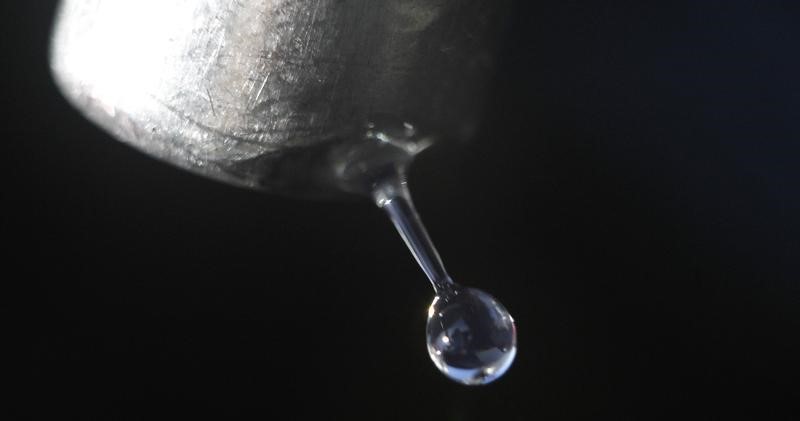Earnings call: Donegal Group Q3 2024 results show resilience amid challenges

Donegal Group Inc. (NASDAQ: NASDAQ:DGICA) reported its earnings for the third quarter of 2024, presenting a net income of $16.8 million or $0.51 per Class A share. The results were achieved despite facing pre-tax losses of $6 million from Hurricane Helene. The company experienced a growth in net premiums earned and written, coupled with an improved combined ratio. Strategic policy non-renewals and a focus on small business growth were also highlighted, alongside progress in software modernization efforts.
Key Takeaways
- Donegal Group’s net income reached $16.8 million, or $0.51 per Class A share, in Q3 2024.
- Net premiums earned increased by 6% to $238 million, with net premiums written up by 5.9%.
- The combined ratio improved significantly to 96.4%, compared to 104.5% in the previous year.
- Weather-related losses totaled $24.4 million, a slight decrease from the previous year.
- The company is focusing on small business growth and software modernization for 2025.
- Personal lines premiums grew by 5.4%, despite a 7.3% decline in policies-in-force.
- Investment income rose by 2.8% to $10.8 million, with a shift towards higher-yield corporate debt.
- Book value per share increased to $15.22, up from $14.39 at the end of 2023.
Company Outlook
- Donegal Group is finalizing its 2025 business plan, with a focus on small business growth.
- Software modernization is progressing, with automation of legacy policy conversions set for January 2025.
- The company is committed to obtaining necessary rate increases to counteract economic inflation and claims costs.
- Streamlining operations is expected to reduce the expense ratio by one full point in 2024 and two points by 2025.
Bearish Highlights
- Policies-in-force declined by 7.3% due to targeted reductions in new business.
- The company is navigating social inflation and rising severity in claims, particularly in workers’ compensation.
- There are competitive pressures in pricing, despite confidence in maintaining rate adequacy.
Bullish Highlights
- Personal auto and homeowners renewal rates increased by 15.7% and 13.2%, respectively.
- The company is diversifying geographic exposure to mitigate weather-related losses.
- There’s optimism for future performance due to strategic initiatives and organizational changes.
Misses
- The company faced $6 million in pre-tax losses from Hurricane Helene.
- Despite the increase in net premiums, policies-in-force saw a reduction.
Q&A Highlights
- Donegal Group’s leadership addressed questions about the company’s strategic non-renewals and the impact on future growth.
- The company discussed its efforts to balance rate increases with customer retention.
- Executives explained the rationale behind the portfolio shift towards higher-yield corporate debt and the increase in equity holdings.
In conclusion, despite the challenges posed by Hurricane Helene and the broader industry, Donegal Group has shown resilience in its third-quarter performance. The company is making strategic decisions to position itself for growth in the coming year, with a keen eye on rate increases, expense management, and software modernization. With an improved combined ratio and a strong focus on strategic initiatives, Donegal Group remains optimistic about its future prospects.
InvestingPro Insights
Donegal Group Inc.’s (NASDAQ: DGICA) recent earnings report aligns with several key insights from InvestingPro. The company’s focus on maintaining dividend payments is evident, as InvestingPro Tips highlight that Donegal has raised its dividend for 24 consecutive years. This commitment to shareholder returns is particularly noteworthy given the challenges faced in the insurance industry.
The company’s reported net income of $16.8 million for Q3 2024 supports the InvestingPro Tip that net income is expected to grow this year. This growth is reflected in the company’s profitability over the last twelve months, as indicated by another InvestingPro Tip.
Donegal’s strategic focus on small business growth and rate increases aligns with the need to address its weak gross profit margins, a concern noted in the InvestingPro Tips. The company’s efforts to streamline operations and reduce the expense ratio by two points by 2025 could help improve these margins.
InvestingPro Data shows a Price to Book ratio of 1.07, suggesting the stock is trading close to its book value. This could be seen as relatively attractive, considering the company’s dividend history and expected income growth. However, investors should note that the stock is trading at a high P/E ratio of 71, which may indicate that the market has high expectations for future growth.
The dividend yield of 4.88% reported by InvestingPro Data is particularly attractive in the current market environment and aligns with the company’s history of consistent dividend payments.
For investors seeking a more comprehensive analysis, InvestingPro offers additional tips and insights beyond those mentioned here. In fact, there are 10 more InvestingPro Tips available for Donegal Group, which could provide valuable context for understanding the company’s financial position and future prospects.
Full transcript – Donegal Group B Inc (DGICB) Q3 2024:
Karin Daly: Good morning and thank you for joining us today. This morning, Donegal Group issued its Third Quarter 2024 Earnings Release outlining its results. The release and a supplemental investor presentation are available in the Investor Relations section of Donegal’s website at www.donegalgroup.com. Please be advised that today’s conference was pre-recorded, and all participants are in listen-only mode. Speaking today will be President and Chief Executive Officer, Kevin Burke; Chief Financial Officer, Jeff Miller; Chief Underwriting Officer, Jeff Hay; Chief Operating Officer, Dan DeLamater; and Chief Investment Officer, Tony Viozzi. Please be aware that statements made during this call that are not historical facts, are forward-looking statements and necessarily involve risks and uncertainties that could cause actual results to vary materially. These factors can be found in Donegal Group’s filings with the Securities and Exchange Commission, including its annual report on Form 10-K and quarterly reports on Form 10-Q. The CCompany disclaims any obligation to update or publicly announce the results of any revisions that they may make to any forward-looking statements to reflect the occurrence of anticipated or unanticipated events or circumstances after the date of such statements. With that, it is my pleasure to turn it over to Mr. Kevin Burke. Kevin?
Kevin Burke: Thank you Karin, and welcome everyone. In today’s call, we will provide commentary on our quarterly financial results and an update on strategies and actions that we expect will continue to drive favorable results in future periods. We will outline the factors that contributed to the highest level of quarterly earnings we have achieved since 2020. We achieved net income of $16.8 million, or $0.51 per Class A share, despite incurring $6 million of pre-tax catastrophe losses related to Hurricane Helene. We will provide more details about weather-related losses and other key earnings drivers later in the call. Having completed our strategic non-renewals of all commercial policies in the state of Georgia and Alabama in July, our commercial lines growth in the quarter reflected higher levels of commercial lines new business in targeted states and classes of business, as well as solid renewal premium increases and retention levels. We are now ramping up our small business commercial underwriting strategy for all four of our operating regions to build momentum in small business growth, which will be a key area of focus for us in 2025 and the years ahead. We completed our fourth annual state strategy sessions in August, and we are refining our strategies and action plans as we finalize our 2025 business plan. Our team is fully aligned, and we are looking forward to capitalizing on opportunities for profitable growth in 2025. We are making excellent progress on the final two major software releases within our systems modernization project. In fact, over this weekend we will deploy the first phase of one of these releases, which will facilitate the automated conversion of our remaining legacy homeowners and dwelling and fire policies, converting to our new platform as they renew starting with policies effective in January 2025. As you will hear from the other presenters today, we remain focused on solid execution, and I am confident that our strategies and actions will continue to generate favorable results through the fourth quarter and looking ahead to 2025 and beyond. I will now turn the call over to Jeff Miller to review our third quarter financial results.
Jeff Miller: Thanks Kevin. For the third quarter of 2024, net premiums earned increased 6% to $238 million. Net premiums written increased by 5.9%, as strong premium rate increases and retention were offset partially by planned attrition in states and classes of business we have targeted for profit improvement. Rate increases achieved during the third quarter of 2024 remained in double-digit percentages, averaging 12.6% in total, and 13.6% when excluding workers’ comp. The combined ratio was 96.4% for the third quarter of 2024, compared to 104.5% for the prior-year quarter, with a decrease in the loss ratio primarily accounting for the improvement. The core loss ratio declined 6.6 percentage points from the prioryear quarter due to a combination of higher earned premiums and improved claim frequency and severity, and we were pleased to see improvement in the core loss ratios of all of our lines of business. Weather-related losses of $24.4 million, or 10.3 percentage points of the loss ratio for the third quarter of 2024, were slightly lower than the $25.7 million, or 11.5 percentage points we incurred for the third quarter of 2023. The lower impact was primarily due to reduced severity of commercial property losses, with $5.3 million of losses contributing 10 percentage points to the quarterly commercial multi-peril loss ratio, compared to 17.5 percentage points of the loss ratio for that line of business in the third quarter of 2023. In our homeowners line, weather-related losses totaled $16.3 million, or 45.2 percentage points of the loss ratio, compared to 49.2 points in the prior-year quarter. In total, the quarterly weather claim impact was higher than the previous five-year average for the third quarter of 9.4 percentage points. Our insurance subsidiaries incurred $6 million in net losses from Hurricane Helene, which caused significant homeowners losses in Georgia in late September. That $6 million impact reflected our insurance subsidiaries’ full aggregate reinsurance retention amount under their property catastrophe reinsurance agreement with Donegal Mutual. Large fire losses which we define as over $50,000 in damages contributed 3.7 percentage points to the loss ratio for the third quarter of 2024, which was lower than 4.9 percentage points for the prior-year quarter. The decrease reflected lower average severity of commercial fire losses as homeowners fire loss activity was comparable to the prior-year quarter. Our insurance subsidiaries had $6.2 million of favorable reserve development for losses incurred in prior accident years, which decreased the loss ratio by 2.6 percentage points for the third quarter of 2024, compared to $7.3 million that decreased the loss ratio by 3.3 percentage points for the prior-year third quarter. Breaking the development down by line of business, we had favorable development of $4.0 million in commercial multi-peril, $2.2 million in other commercial, $933,000 in workers’ compensation and $800,000 in personal auto, offset partially by $1.6 million of unfavorable development in commercial auto, due primarily to higher-than-expected severity of a handful of claims. The expense ratio was 34.5% for the third quarter of 2024, compared to 34.1% for the third quarter of 2023. Dan will provide more details about our expense ratio and our ongoing expense reduction initiatives in a few minutes. In summary, the combined contributions of underwriting and investment income for the third quarter of 2024 resulted in aftertax net income of $16.8 million, compared to a net loss of $805,000 for the third quarter of 2023. As Kevin stated earlier, we are pleased with this improvement in our net income, particularly considering that the main driver of the favorable performance was an improvement in our core loss ratio. For more details about that improvement and specifics about our commercial and personal lines segment results, I will now turn the call over to Jeff Hay.
Jeff Hay: Thank you, Jeff. Starting with commercial lines, net premiums written increased 6.4% during the quarter, primarily driven by new business in targeted geographies and classes of business, coupled with strong rate and retention achievement. As was already mentioned, we successfully completed our exit of commercial lines business in Georgia and Alabama, which was a significant profit improvement measure and partially offset our premium growth over the past year. We are now fully focused on our go-forward strategy in Commercial Lines, seeking outsized growth in small commercial accounts as we continue to expand our automation and service capabilities for that segment. We are seeing improvements in our straight-throughprocessing rate and hit rates on our new small commercial products and service offerings, which frees up our underwriters to give enhanced time and attention to writing high-quality middle market accounts. And as a reminder, we are and will continue to be an all-lines account writer and, from an exposure or policy count basis, we expect growth rates to be largely similar across all commercial lines of business. Last quarter, I highlighted several profit improvement initiatives that we are continuing to execute to refine our commercial lines book of business. These efforts include the utilization of new underwriting tools, such as a comprehensive Probable Maximum Loss fire analysis for property risks, utilization of aerial imagery enhanced with artificial intelligence to identify roof issues, point of sale integrations to catastrophe modeling tools, and multiple third-party data analytical tools. Those tools are not only ensuring the quality of the new business we are writing, but we are also applying them to our renewal business, resulting in the non-renewal of a significant number of property risks that those tools have identified as having higher propensity to loss. We are also actively revising underwriting guidelines for certain profit-challenged classes of business and rolling out mandatory wind/hail deductibles in all catastrophe prone areas across our footprint. We believe all of these actions are contributing in part to the core loss ratio improvement we achieved in the current quarter across all of our lines of business. Renewal rate increases remained strong in the quarter, as we achieved an average 12.8% rate and exposure increase across our commercial lines, excluding workers’ compensation. This was led by commercial multi-peril at 14.5% and followed by commercial automobile at 11.6%. The commercial lines statutory combined ratio for the third quarter was 89.8%, a 7.7-point improvement from 97.5% in the prior-year quarter. Large fire loss activity was down 39% year-over-year, with lower average severity driving the decrease. We expect to see a continued reduction in the likelihood of large fire losses through the implementation of various strategic actions. We also saw a reduction in our weather-related losses within our commercial lines, given the light weather quarter outside the headline event that occurred at the end of the quarter. Hurricane Helene, which made landfall as a Category 4 hurricane on September 26th, devasted key areas in our footprint, including Georgia, the Carolinas, Virginia and Tennessee. Fortunately for both our insureds and our results, the impact of the storm had minimal impact in terms of commercial lines losses reported to date. Turning to other loss trends: for commercial auto, we are continuing to see the end of the post-pandemic frequency increases and a return to the longer-term decreasing frequency trend. Auto physical damage severity increases are continuing to moderate and sit in-line with our historical trend line, while liability severity during the quarter ticked down just below historical trend. Commercial multi-peril loss severity, while still elevated, is moderating due to the lower impact of large fire losses, but we are monitoring gradual increases in liability severity trends that reflect industry concerns around the impact of social inflation, legal system abuse, jury anchoring, third-party litigation financing and higher propensity for nuclear verdicts. To date, favorable frequency trends have largely offset the increase in severity, but we are monitoring it closely and attempting to adjust our pricing to stay ahead of the trend changes. For our workers’ compensation line of business, we saw medical severity return to our longer-term trend line, affirming our assumption of an anomalous increase in the first half of 2024. Overall workers’ compensation loss frequency continues follow a negative trend, even steepening in recent quarters, and recent observations of indemnity severity increases are continuing due to wage inflation. The workers’ compensation market is very competitive with pressure from continued rate decreases filed by bureaus. As we look forward to 2025, we do not see any signs of this downward rate pressure abating in the near-term. Nevertheless, we are confident that we can maintain rate adequacy due to the negative frequency trends we continue to experience in this line of business. Shifting to our personal lines business segment – net premiums written increased 5.4% for the third quarter, driven by a continuation of aggressive premium rate increases and strong policy retention that were offset by two factors. First, as we previously shared, we are intentionally reducing our new business writings in an effort to maintain profitability given the naturally elevated loss ratio new business typically generates. Second, effective in September, we began non-renewing our Peninsula Insurance Company subsidiary’s legacy personal lines business in the state of Maryland given recent profitability issues for that book of business that represents approximately $20 million in premiums. We expect this initiative to partially offset the impact of rate increases on our personal lines premium growth through August 2025, when that Peninsula run-off will be complete. Primarily as the result of the factors I just described, our personal lines policies-in-force declined 7.3% compared to the prior-year period. Despite the start of the Peninsula run-off, our overall personal lines retention was consistently strong at 86.4%, indicating that policyholders continue to accept higher renewal premiums. Personal auto and homeowners renewal rate and exposure increases were 15.7% and 13.2%, respectively, for the third quarter. We estimate that we are essentially rate adequate in personal lines overall, and we will continue to pursue rate increases in state and lines of business combinations to offset loss trends. Furthermore, our net premiums earned now reflect rate increases that exceed loss cost increases, which is resulting in targeted margin expansion. That leads me to a few metrics on personal lines profitability – the statutory combined ratio was 104.7% compared to 119.4% in the prior year period. The personal auto loss ratio decreased by 10.3 points compared to the third quarter of 2023, largely driven by a decrease in core losses and slightly favorable prior-year reserve development. Homeowners saw an improvement of 9.8 points from the prior-year period, with comparable large fire impact and slightly improved weather-related losses, despite the impact of Hurricane Helene. This major catastrophe primarily impacted our policyholders in Georgia, with ancillary losses in other states, contributing $5.8 million in losses for our personal lines segment. We understand that many of our policyholders in the state of Georgia faced significant losses and disruptions during the aftermath of Hurricane Helene — as always, it is our top priority to serve our policyholders during severe events. And many thanks to our claims team, who were well prepared to take action and provide the much-needed support. Just two weeks after Hurricane Helene, Hurricane Milton made landfall in Florida. At this time, we received no claims related to Milton, as this was largely a Florida event where we have no exposure. For those across the Southeast Corridor, we want to extend our heartfelt thoughts to everyone affected by these natural disasters. As an offensive component of our personal lines strategy, we are actively diversifying the geographic footprint of our property book to optimize the diversification benefit and mitigate the impact of weather-related losses. We have identified down to the county level within the ten states in which we write personal lines, where we are looking to grow, and where we are looking to shrink, in order to execute this strategy. During the third quarter, we successfully reduced our policies-in-force by 12.8% in counties we wanted to shrink exposures, compared to a 3.0% reduction in counties where we view our concentrations as acceptable. The ongoing execution of this strategy will allow us to achieve manageable concentrations within our geographic footprint and resulting in more predictable weather-related loss impacts. With that, I will turn the call over to Dan DeLamater. Dan?
Dan Delamater: Thank you Jeff. I will begin my comments by providing an update on our expense reduction initiative that we discussed in previous calls. For the third quarter, we operated at an expense ratio of 34.5%, compared to 34.1% for the third quarter of 2023. The modest increase in the expense ratio primarily reflected higher underwriting-based incentives for our agents and employees incurred during the quarter as a result of the improved loss ratio vs. the third quarter of 2023. Excluding those incentives, our expense ratio decreased by approximately half of a point compared to the prior-year quarter. We have recognized significant improvement due to the impacts of various expense reduction initiatives, including agency incentive program revisions, commission schedule adjustments, targeted staffing reductions, and deferred replacement of open employment positions, among others. As a result, we are now operating at a year-to-date expense ratio of 34%, which compares favorably to 34.9% in the same period last year. And as a reminder, these expense reductions are even more noteworthy considering we are realizing the peak expense impact of Project Nautilus, our multi-year systems modernization project, in 2024. Because of multiple targeted initiatives across virtually every department in the organization, we are on pace toward our expectation to reduce our expense ratio by one full point in 2024 and two points by the end of 2025. We are proud of our teams’ commitment and resilience they have shown in this effort. These initiatives are difficult and have full visibility across the company. And for every high profile initiative, there are dozens of smaller initiatives that contribute meaningful and sustainable expense improvement. One of the initiatives that is meaningful but reported as a separate income line item, rather than an expense reduction, is our implementation of a surcharge on credit card payments. The surcharge became effective in the second quarter of 2024 and explains the substantial increase in installment payment fee income in the third quarter of 2024. In summary, we recognize the need for broader efficiencies and long-lasting expense improvement to contribute to our operating profitability. I’d also like to provide an update on our state strategy initiatives that define our desired product mix, rate targets, marketing strategy, and growth objectives in every line of business within each state where we are active for either commercial lines, personal lines or both. We recently completed our annual state strategy meetings, where representatives from our regional product, underwriting and marketing teams collaborate with senior leadership to align plans for the year ahead. These efforts are especially important as we actively manage our property concentrations in weather-prone areas. They also help guide our regional and national accounts teams toward intentional product mix and growth plans in all lines, and even identifying specific classes of business we want to emphasize for profitable growth. Many of those discussions involved action plans to expand our small business strategy and to build on early successes. As we leverage our capabilities to provide specialized services to this market segment, it enhances our ability to bolster our middle market presence for our independent agency partners across the country. Furthermore, we collaborated on refining growth postures for each state to ensure an intentional alignment of our strategic objectives and growth expectations across our operating regions and functional disciplines. This alignment will translate to a cohesive business plan for 2025, resulting in an effective allocation of resources where needed and cascading down to coordinated regional business plans and, ultimately, specific plans for our independent agency partners. We are pleased with the progress realized in the third quarter of 2024 and recognize it as a step forward toward the operating results we expect. We will continue to obtain appropriate rate increases to offset economic inflation, large loss activity, social inflation, and claims costs generally; and we will continue to maintain discipline in our expense reduction efforts. Executing on each of these initiatives is paramount to the achievement of sustained excellent financial performance. For additional insight into our investment results, I’ll now turn it over to Tony Viozzi.
Tony Viozzi: Thanks, Dan. Our investment strategy, as always, aligns with our conservative principles. We continue to focus on holding high quality credits that are characterized by strong investment income and low volatility. Ultimately, our goal is not only to preserve capital, but also to manage a portfolio that is resilient, adaptable, and capable of generating consistent returns, regardless of market conditions. During the third quarter of 2024, net investment income increased 2.8% from the prior-year quarter to $10.8 million. The average net investment income yield for the quarter was 3.28%, up from 3.22% for the third quarter of 2023. Current market interest rates remain generally elevated compared to the past decade, allowing us to reinvest our portfolio cash flow into bonds with significantly higher yields. Overall, our average reinvestment rate of 5.25% during the third quarter represented an 89 basis point improvement over the bond cash flow yield during the quarter. We expect approximately $100 million in cash flow from maturities, calls and pay-downs over the next 12 months. The average yield we are currently receiving on those bonds is 3.70%. During the third quarter, we continued our move out of agency debt and shifted into corporate debt. We actively monitor macroeconomic indicators and market conditions to identify opportunities that may arise during periods of volatility. With that, we have continued to increase our equity position gradually, with a 39% increase in equity holdings compared to year-end 2023. We achieved a $1.9 million of net investment gain on equities in the third quarter, compared to a loss of $1.2 million in the prior-year third quarter. Year-to-date net investment gains on equities were $4.7 million compared to $930,000 last yearto-date. As of September 30, 2024, our book value per share was $15.22, an $0.83 increase compared to $14.39, as of December 31, 2023. The increase in book value was primarily attributable to net investment income along with our gains on available-forsale bonds and the equity portfolio, which was partially offset by a modest year-to-date underwriting loss and declared cash dividends. With that, I will now turn it back to Kevin for closing remarks.
Kevin Burke: Thanks, Tony. As we shared throughout the call today, our underlying results are beginning to reflect all the efforts our entire team has put forth. For several years, I have been optimistic and hopeful that the significant organizational changes and investments in systems, capabilities and talent would yield positive results. That optimism has led to a growing confidence that our strategies will yield the intended results, and we look forward to providing further updates to you in our year-end call I’ll now turn the call over to Karin.
Karin Daly:
This article was generated with the support of AI and reviewed by an editor. For more information see our T&C.




